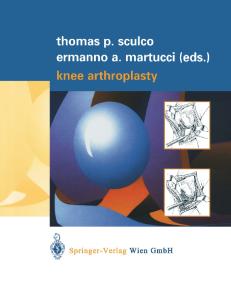Improved mediolateral load distribution without adverse laxity pattern in robot-assisted knee arthroplasty compared to a
- PDF / 1,251,937 Bytes
- 11 Pages / 595.276 x 790.866 pts Page_size
- 114 Downloads / 276 Views
KNEE
Improved mediolateral load distribution without adverse laxity pattern in robot‑assisted knee arthroplasty compared to a standard manual measured resection technique William Manning1,4 · Milton Ghosh1,4 · Ian Wilson2 · Geoff Hide4 · Lee Longstaff3 · David Deehan1,4 Received: 15 January 2019 / Accepted: 15 July 2019 © The Author(s) 2019
Abstract Purpose Robot-assisted total knee arthroplasty (rTKA) remains in its infancy, is expensive but offers the promise of improved kinematic performance through precise bone cuts, with minimal soft tissue disruption, based on pre-resection soft tissue behaviour. This cadaveric study examined load transfer, soft tissue performance and radiographic indices for conventional (sTKA) versus rTKA. The null hypothesis was there would be no difference between the two modes of implantation. Methods Whole (ten) cadaveric limbs were randomised to receive either robotic (rTKA, N = 5) or conventional measured resection (sTKA, N = 5) knee arthroplasty. Laxity patterns were established using validated fixed sensors (Verasense) with manual maximum displacement for six degrees of freedom. Tibiofemoral load and contact points were determined dynamically using remote sensor technology for medial and lateral compartments through a functional arc of motion (0–110 degrees of motion). Final component position was assessed using pre- and post-implantation CT. Results No significant intergroup differences for laxity were found (n.s.). The rTKA group exhibited consistently balanced mediolateral load throughout the full arc with significantly reduced overall total load across the joint (for distinct points of measurement, p 66.7 N was classed as not balanced as per Verasense™ guidance [15]. Computer navigation was a Stryker eNdtrac Knee Navigation System, Michigan USA allowing for tracked knee motion to an accuracy of ± 0.5 mm. The average time between two digitizations was approximately 150 ms, which equated to a frame rate of 6.67 Hz m [10]. The Verasense™ tibial sensor recorded tibiofemoral contact force (lbs/force) and contact points (mm accuracy ± 2 mm). This was taken for 0°, 30°, 60°, 90° and 110° of knee flexion.
Fig. 2 Schematic image of the setup of operated limb with pelvis fixation using external mounted frame and leg holder
Robotic TKA Following arthrotomy, anatomical landmarks were referenced using a wand matching the digitised bone model to the CT. Medial and lateral gaps were evaluated in flexion and extension prior using spacer paddles to guide final
13
Knee Surgery, Sports Traumatology, Arthroscopy
Component position Following laxity and load measurements all knees were reimaged and CT scans were analysed by a blinded senior radiologist to assess component rotation using previously validated protocols [17]. Femoral component rotation was measured as the angle between the posterior condylar line of the femoral component and the trans-epicondylar axis. A positive (+ve) value was given for external rotation. Tibial component rotation was measured by the angle between a li
Data Loading...











